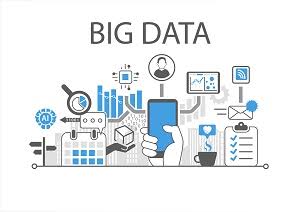The data center is one of the key drivers of 21st-century commerce and communications, but how many of us know about the role technology has played in transforming the industry?
When you used to think of data centres, you would often picture private servers in a backroom. Then data centers came along and centralized everything. Now, you think of the cloud. It offers faster scalability and lowers capital expenditure. Something which is great for businesses, but how has it changed the landscape for the data centers themselves?
Fewer organizations are now building and running data centers
You only have to look at the growth of AWS to see that cloud computing is now one of the biggest businesses on the planet. As with any fledgling industry, data centers are going through a tipping point where a wide spectrum of local entities start to be overtaken by providers with national and global reach .
This is a natural part of any industry, but it’s the pace of the change in the data center industry that’s turning heads. In fact, rather than showing signs of slowing down, it’s actually accelerating. The upshot of this is that more and more data centers are being built by a smaller, concentrated number, of companies.
Cloud providers build their own data centres and disrupt the industry
Providers of cloud services started by leasing wholesale space in multi-use data centers. Now what we’re seeing are more and more cloud providers owning their own data centers and designing them from the ground up. This makes sense for a number of reasons:
- They want to own the hardware that their business relies on
- It allows them to design larger, more scalable solutions
- There are no restrictions on geographic location, so cloud providers can seek out lower cost real estate, as well as ambient temperatures that are more conducive to natural cooling
When you put it like that, it’s immediately clear why data centers are now being built by the major cloud providers. The pace of change has largely been driven by the lower costs of cloud computing, it’s the high degree of scalability, and the ability of any company to outsource their data so that they can keep their own in-house operations lean. These are all highly likely to remain desirable from a business point of view, hence the continued acceleration in the cloud computing market.
“As a business planner, I feel it is essential for me to know how our data is stored and processed. By learning about how different centers work, I’ve been able to gain fresh insight into what I need to be looking for” — says Lauren Shepherd, Business Planner at Designhill.
Cloud providers can make use of geographic freedom, unlike service providers
One of the real key differences in the post-cloud disrupted data center model, is that cloud providers are not tied to geographic locations like their predecessors were. You might initially think that this means they opt to move to more glamorous locations.
In fact, the opposite is often true. The ideal location for a data center requires three distinct things:
- Low cost of real estate so that large scale centers can be built with virtually unlimited scalability
- Cooler climates year round to make best use of natural sources of cooling. This helps cut costs and allows the new breed of data centers to tout their green credentials
- A location that is relatively remote for security reasons, but also has a high tech mobile workforce nearby
Of course, in a country like the US where there are numerous climates and large areas of clear land to choose from, this model is easily deployable. The interesting thing about it is that it’s not only changing the location of data centres but their very layout…
The campus model is going from strength to strength
The modern data center looks more like a sprawling university campus than it does a towering office block. If you want to gain some insight into how the cloud works without getting lost in the technical details, the campus model tells you everything you need to know.
As a highly scalable solution that allows everyone to outsource their data handling, they must be capable of on-demand scaling. In some ways, this process is just getting started with the IoT set to add billions of devices as it expands and opens up new technological paradigms.
Clean onsite power generation is now a realistic option
The campus model brings with it a wealth of open land that be used to expand the data centers of the future. The interesting thing about this approach is that it’s now driving innovations in terms of power generation. With cloud companies becoming self-sufficient in terms of the tech hardware, the natural extension is to start generating energy on-site.
This is a great example of an initial tech innovation changing the very infrastructure of an industry.
Competing architectures between cloud providers are driving innovation
The role of the cloud is to offer more people the chance to connect, the faster this happens, the faster the industry grows. As competition hots up we’re seeing more and more innovation in the form of data center architecture.
This takes in everything from the processing protocols and choice of hardware, to the physical layouts of the centers to optimize cooling, and the location of the centers themselves. Everyone is doing things differently, and there is yet to be a set standard that has emerged. This is in large part due to the inherent scalability and growth of the new look data center.
One thing is for sure, the future data center outlook is going to be defined by the direction of the cloud. As the IoT becomes ever more present in our lives you can expect to see more innovation and growth as the speed of change in the data center industry continues to accelerate.
Final Thoughts
Data centers have changed beyond all recognition as a result of the rise of cloud computing. The interesting thing about this model, is that for it to succeed it needs to continue to provide seamless scalability as our demands on it increase. As more businesses and applications are formed which rely on the cloud, we can expect to see technical innovation and the growth of campus style data centers continue to accelerate.
Marie Fincher is a content writer at TrustMyPaper.com with a background in marketing, technology and business intelligence. She frequently writes about data science, BI, new marketing trends and branding strategies. Marie gradually changed her focus from working in marketing to writing about it.

























































































































































































